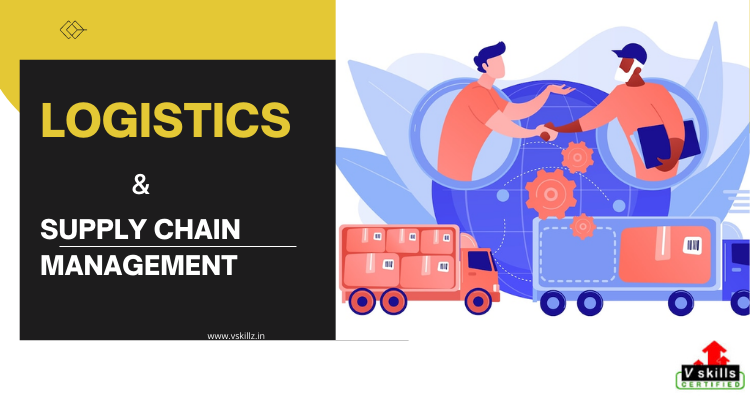All the conditioning, associated with the sourcing, procurement, conversion and logistics operation, comes under the force chain operation. Above all, it encompasses the collaboration and collaboration with the parties like suppliers, interposers, distributors and guests. Logistics Management is a small portion of Supply Chain Management that deals with the operation of goods in an effective way.
It has been noticed that there’s a drastic change in the manner in which business was conducted numerous times alone and now. The enhancement in technology leads to the development of all crucial areas of business. Supply Chain Management also evolved as an enhancement over Logistics Management, from once times.
What is Supply Chain Management?
Supply Chain Management( SCM) is a series of connected conditioning related to the metamorphosis and movement of raw material to the finished goods till it reaches the end stoner. It’s the outgrowth of the sweat of multiple associations that helped in making this chain of conditioning successful.
These associations may include the enterprises with whom the association is presently working like mates or suppliers, manufacturers, wholesalers, retailers, and consumers. The conditioning may include integration, sourcing, procurement, product, testing, logistics, client services, performance dimension, etc.
Supply Chain Management has a multi-dimensional approach which manages the inflow of raw accoutrements and workshop in progress(semi-finished goods) within the association and the end product outside the association till it reaches the hands of the final consumer with a complete emphasis on the client demand.
Functions of Supply Chain Management
- Purchasing: The first function of supply chain operation is copping. In the manufacturing process, raw accoutrements are needed to produce goods and products. It’s important that these accoutrements are carried and delivered on time so that product can begin. For this to do, collaboration with suppliers and delivery companies will be needed to avoid any implicit detainments.
- Operations: Demand planning and forecasting are generally needed before accoutrements can be carried out, as the demand request will mandate how numerous units are to be produced and how important material is needed for the product. This function is important in force chain operation as associations must directly read demand to avoid having too important or too little force that will lead to losses in profit. thus, demand planning and soothsaying must be tied in with force operation, product, and shipping to avoid similar miscalculations.
- Logistics: Logistics is the part of the supply chain operation that coordinates all aspects of planning, purchasing, product, warehousing, and transportation so that the products will reach the end consumer without any hindrances. It’s helpful to have acceptable communication between multiple departments so that products can be packed to guests snappily and at the smallest cost.
- Resource Management: Product consumes raw accoutrements, technology, time, and labour. Resource operation ensures that the right coffers are allocated to the right conditioning in an optimized manner. This will insure that an optimized product schedule is created to maximize the effectiveness of the operations. When calculating the available capacity, you should consider the capabilities of each resource and determine whether they can perform the work that’s listed on it.
- Information Workflow: Information sharing and distribution is what keeps all of the other functions of force chain operation on track. However, it could break apart the entire chain, If the information workflow and communication are poor. numerous dislocations that arise in force chains can be averted by increased visibility and communication. Having a harmonious system that’s used by all departments will insure that everyone is working with the same set of data and will help miscommunications and time spent streamlining everyone on new developments.
What is Logistics Management?
The operation process which integrates the movement of goods, services, information, and capital, right from the sourcing of raw material, till it reaches its end consumer is known as Logistics Management. The idea behind this process is to give the right product with the right quality at the right time in the right place at the right price to the ultimate client. Logistic conditioning are divided into two broad orders they are:
- Inbound Logistics: The activities which are concerned with the procurement of material, handling, storage and transportation
- Outbound Logistics: The activities which are concerned with the collection, maintenance, and distribution or delivery to the final consumer.
Functions of Logistics Management
- Order processing: The Logistics conditioning start from the order processing which might be the work of the marketable department in an association. The marketable department is the one that ensures that the payment terms and the delivery terms have been met and also processes the order from within the company.
- Materials handling: Material Running is the movement of goods within the storehouse. It involves handling the material in such a way that the storehouse is suitable to reuse orders efficiently. Although it may sound like a mundane task, it’s an important bone and an ongoing exertion in any storehouse.
- Warehousing: These are consumer durable companies which are present in multiple countries If we take illustration of LG or Samsung. Their manufacturing might be at one point, but the distribution is across the world. therefore, warehousing plays a huge part and is one of the important Logistics conditioning.
- Transportation: Now we come to one of the major logistics conditioning which is one of the most coffers-heavy and profit-heavy members of logistics. There’s a single reason that transportation is expensive – Energy. Be it petrol, Diesel or gas, energy is expensive, and it’s substantially consumed in transportation conditioning. This is why companies spend lakhs to control transportation charges because it’s one of the loftiest variable expenditures for any company.
- Packaging: There are two types of packaging – One which the client sees on the shelf of supermarkets or hypermarkets where the package appears seductive and makes the client buy the packages. The other is transport packaging where the products are packed in bulk so as to avoid any breakage or spillage and yet allow them to transfer huge volumes of the product safely from one place to another.
key Differences
- The inflow and storehouse of goods outside and outside the establishment are known as Logistics. The movement and integration of force chain conditioning are known as Supply Chain Management.
- The main end of Logistics is full customer satisfaction. Again, the main end behind Supply Chain Management is to gain a substantial competitive advantage.
- There is only one organization involved in Logistics while some organizations are involved in Supply Chain Management.
- Supply Chain Management is a new trend in the market as compared to Logistics.
- Logistics is only an activity of Supply Chain Management.
Conclusion
Logistics is a veritably old term, originally used in the service, for the conservation, storehouse and transportation of army persons and goods. currently, this term is used in numerous spheres, not specifically in the service after the elaboration of the conception of Supply Chain Management. It has also been said that SCM is an addition to Logistics Management as well as SCM comprises logistics. Both are thick. Hence they don’t contradict but condense each other. SCM helps Logistics to be in touch with the transportation, storehouse and distribution platoon.



